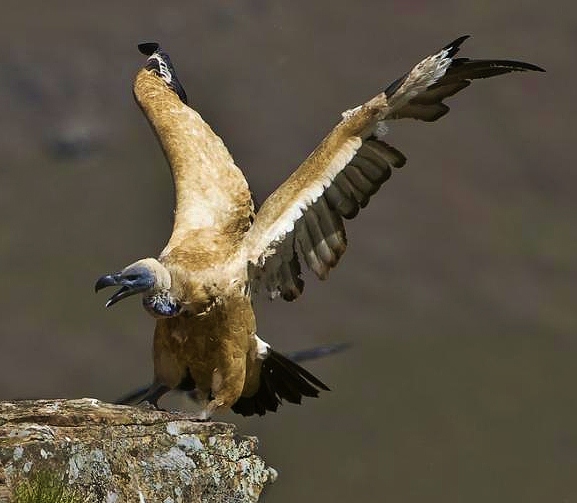 |
| (Photo from ELLF) |
Common name:
Cape vulture (en); abutre-do-Cabo (pt); vautour chassefiente (fr); buitre de El Cabo (es); Kapgeier (de)
Taxonomy:
Order Falconiformes
Family Accipitridae
Range:
This species is found in southern Africa, being patchily distributed across Namibia, southern Zimbabwe, south-eastern Botswana , southern Mozambique and eastern South Africa. They sometimes wander across the border into Angola.
Size:
These birds are 95-115 cm long and have a wingspan of 225-250 cm. They weigh 7-11 kg.
Habitat:
Cape vultures are found in open grasslands, savannas, scrublands and deserts, and often roost on crags in mountain slopes.
Diet:
They are obligate scavengers, eating the carcasses of medium and large-sized mammals.
Breeding:
The Cape vulture breeds in April-December. They are monogamous and nest in colonies of up to 1.000 pairs. The female builds the nest, a bulky platform of sticks, twigs and dry grass, lined with smaller sticks and grass. The nest is placed in a cliff ledge an is often used over several breeding seasons. The female lays a single white egg with brown streaks, which is incubated by both sexes for 55-59 days. The chick is raised by both parents and fledges 4-6 months after hatching, but only becomes fully independent up to 8 months later.
Conservation:
IUCN status – VU (Vulnerable)
This species has a large breeding range and a global population estimated at 8.000-10.000 individuals. The population is declining at a moderate to fast rate, with dramatic declines of 60-70% being recorded in eastern South Africa in 1992-2007. This decline is caused by a multitude of threats, including accidental poisoning on agricultural land, electrocution on pylons, collision with overhead cables and with vehicles, food-stress during chick-rearing, persecution for traditional medicines, disturbance at colonies, and drowning. The use of the anti-inflamatory drug Diclofenac in cattle is also a serious problem as it is fatal to vultures eating livestock carcasses.







